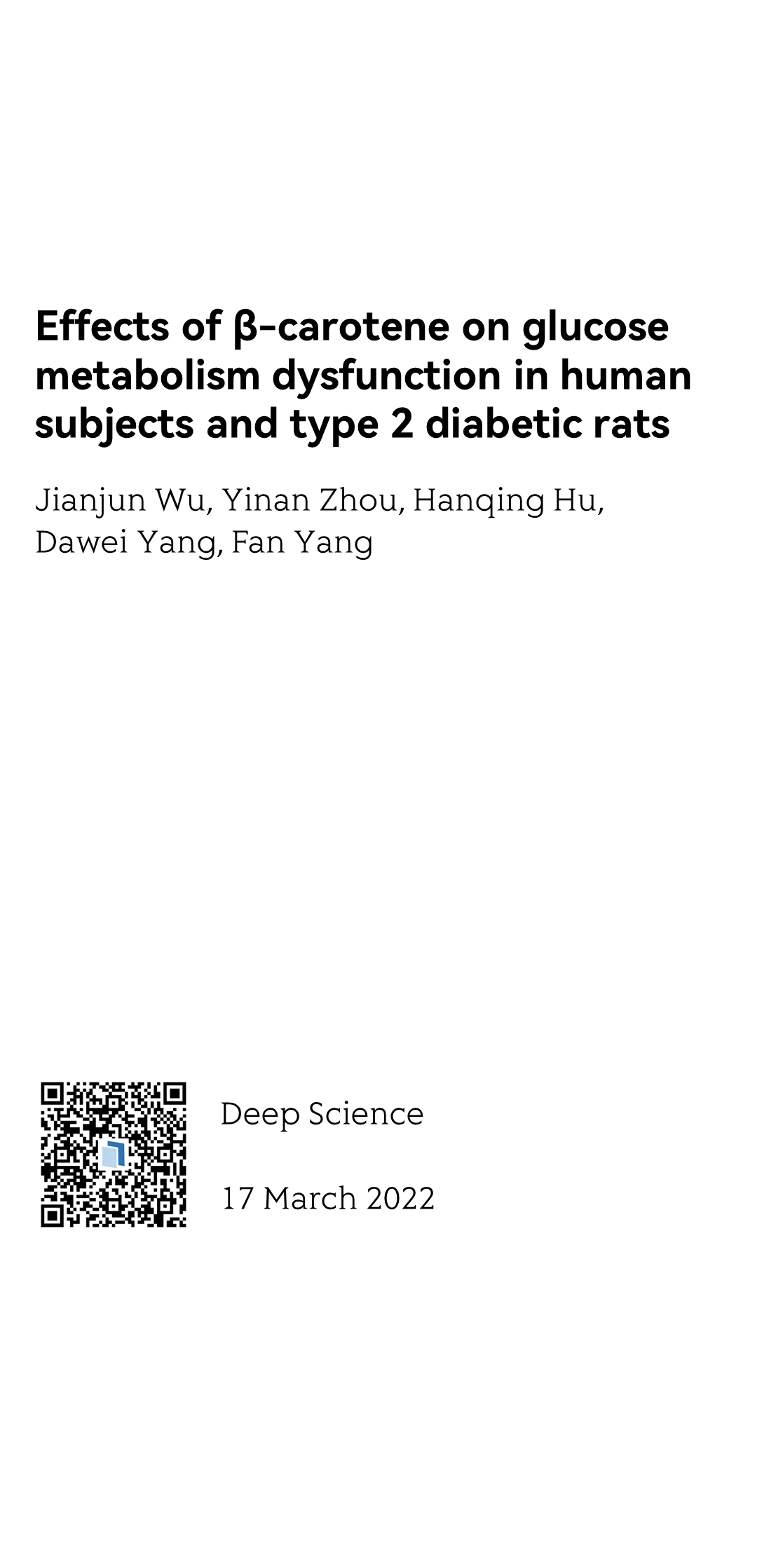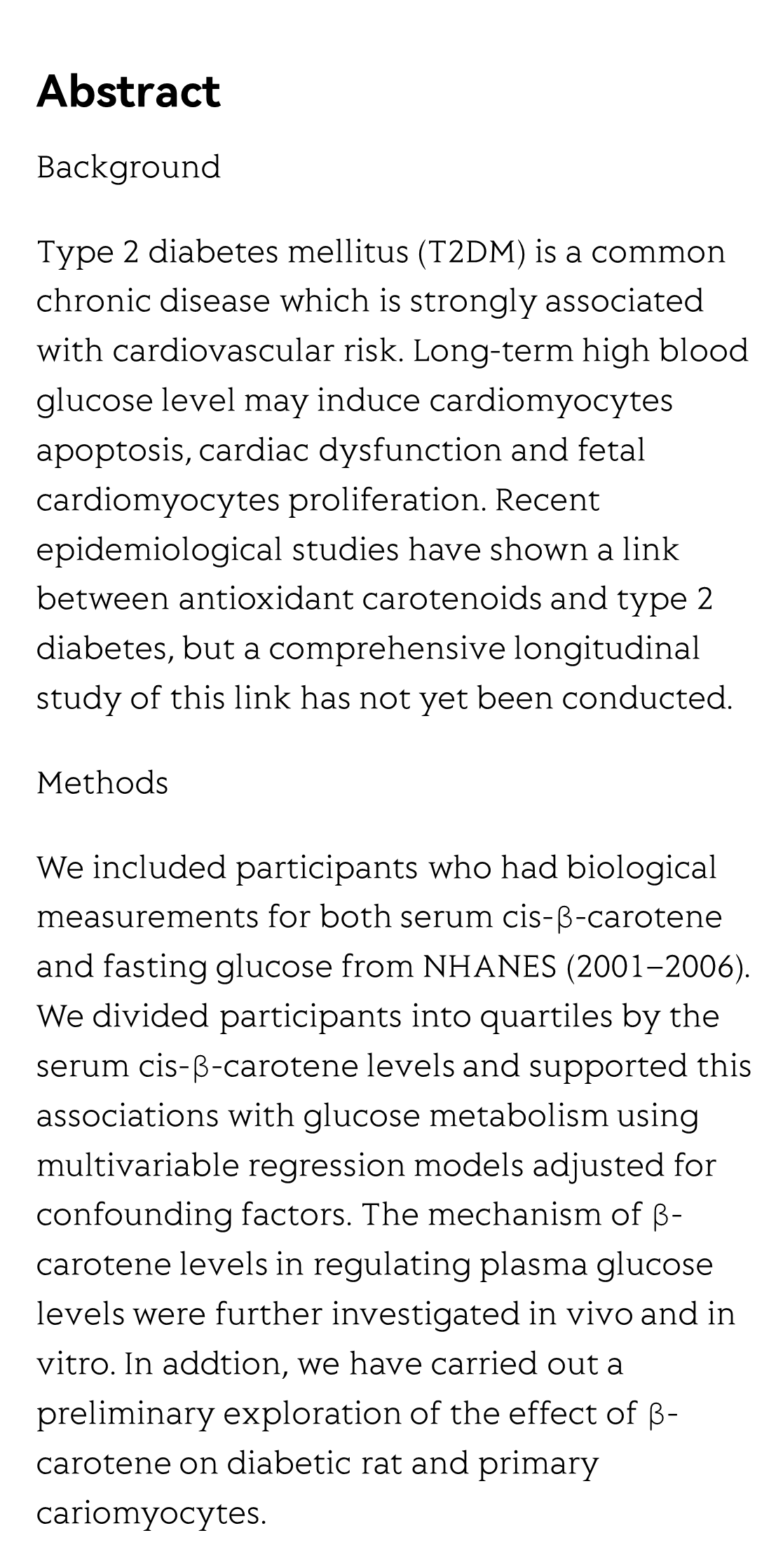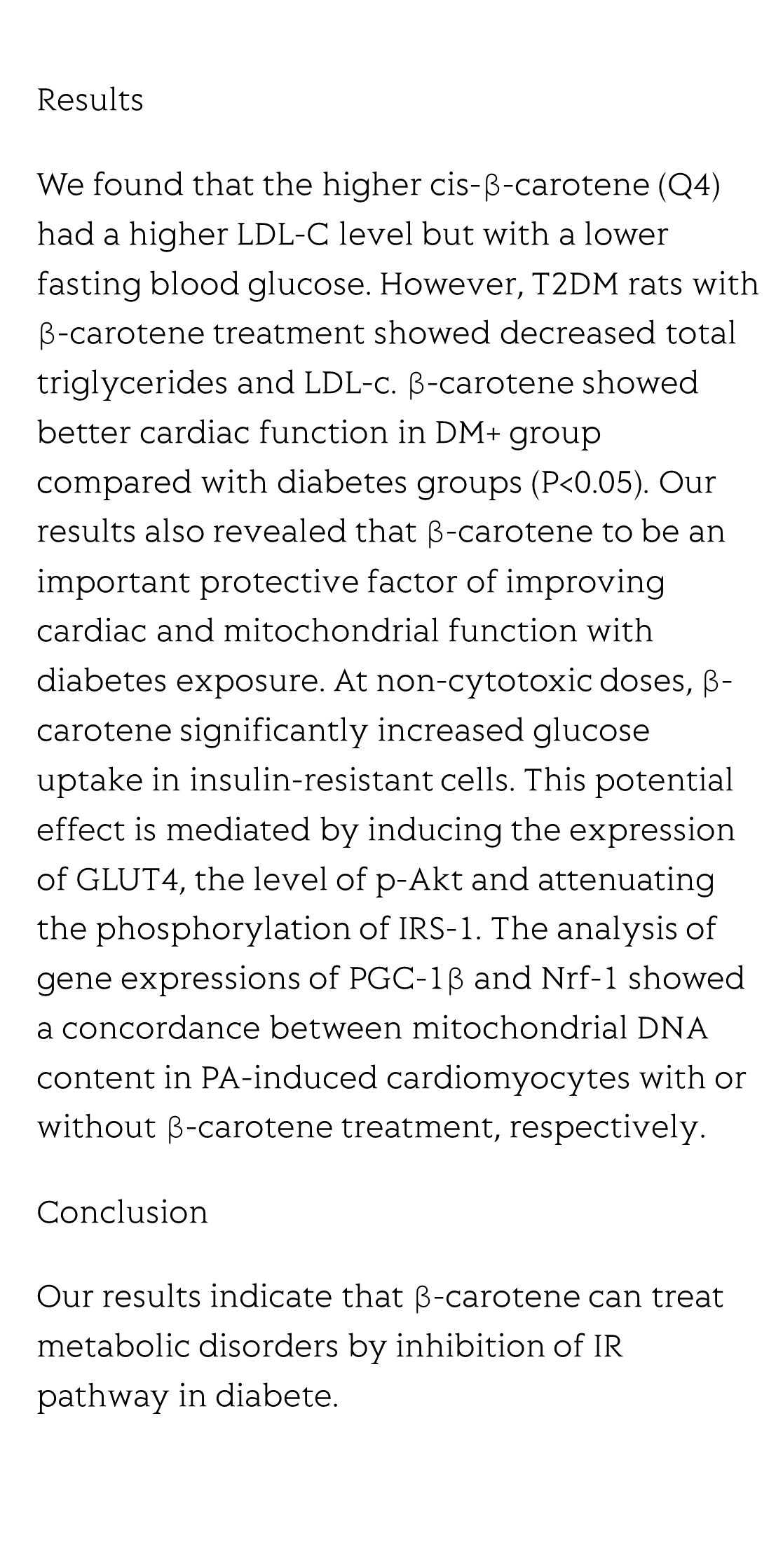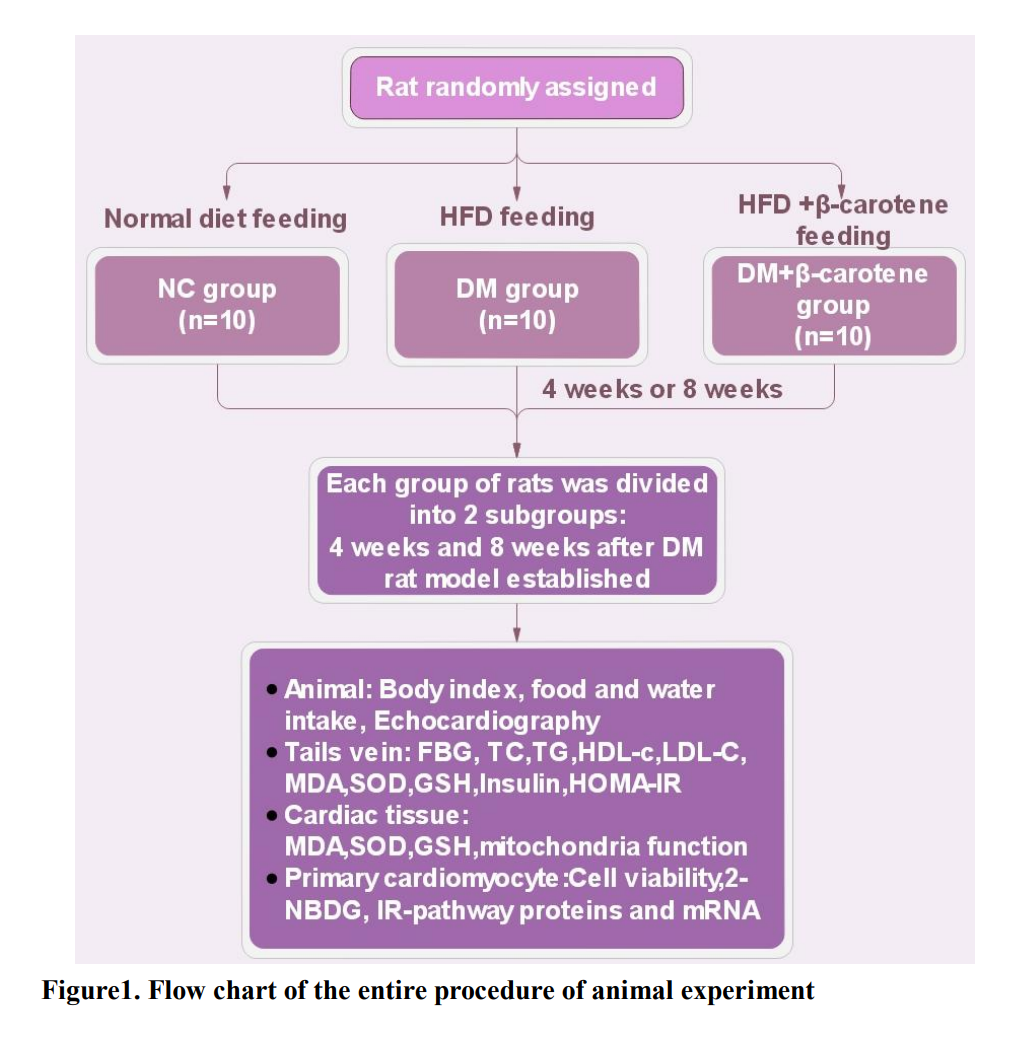(Preprint) Effects of β-carotene on glucose metabolism dysfunction in human subjects and type 2 diabetic rats
Jianjun Wu 吴建军 ¹ ², Yinan Zhou 周一楠 ³, Hanqing Hu ⁴, Dawei Yang 杨大威 ⁵, Fan Yang 杨帆 ¹ ²
¹ Department of Cardiology, The Second Affiliated Hospital of Harbin Medical University, Harbin150001, China
中国 哈尔滨 哈尔滨医科大学第二附属医院心内科
² Key Laboratory of Myocardial Ischemia, Ministry of Education, Harbin Medical University, Harbin 150001, China
中国 哈尔滨 哈尔滨医科大学心肌缺血教育部重点实验室
³ Department of Digestive internal medicine, The First Affiliated Hospital of Harbin Medical University, Harbin150001, China
中国 哈尔滨 哈尔滨医科大学附属第一医院消化内科
⁴ Department of Oncology Surgery, The Second Affiliated Hospital of Harbin Medical University, Harbin150001, China
中国 哈尔滨 哈尔滨医科大学附属第二医院肿瘤外科
⁵ Department of Orthopedics, The Fourth Affiliated Hospital of Harbin Medical University, Harbin150001, China
中国 哈尔滨 哈尔滨医科大学第四附属医院骨科
Deep Science, 2022-03-17
Abstract
Background
Type 2 diabetes mellitus (T2DM) is a common chronic disease which is strongly associated with cardiovascular risk. Long-term high blood glucose level may induce cardiomyocytes apoptosis, cardiac dysfunction and fetal cardiomyocytes proliferation. Recent epidemiological studies have shown a link between antioxidant carotenoids and type 2 diabetes, but a comprehensive longitudinal study of this link has not yet been conducted.
Methods
We included participants who had biological measurements for both serum cis-β-carotene and fasting glucose from NHANES (2001–2006). We divided participants into quartiles by the serum cis-β-carotene levels and supported this associations with glucose metabolism using multivariable regression models adjusted for confounding factors. The mechanism of β-carotene levels in regulating plasma glucose levels were further investigated in vivo and in vitro. In addtion, we have carried out a preliminary exploration of the effect of β-carotene on diabetic rat and primary cariomyocytes.
Results
We found that the higher cis-β-carotene (Q4) had a higher LDL-C level but with a lower fasting blood glucose. However, T2DM rats with β-carotene treatment showed decreased total triglycerides and LDL-c. β-carotene showed better cardiac function in DM+ group compared with diabetes groups (P<0.05). Our results also revealed that β-carotene to be an important protective factor of improving cardiac and mitochondrial function with diabetes exposure. At non-cytotoxic doses, β-carotene significantly increased glucose uptake in insulin-resistant cells. This potential effect is mediated by inducing the expression of GLUT4, the level of p-Akt and attenuating the phosphorylation of IRS-1. The analysis of gene expressions of PGC-1β and Nrf-1 showed a concordance between mitochondrial DNA content in PA-induced cardiomyocytes with or without β-carotene treatment, respectively.
Conclusion
Our results indicate that β-carotene can treat metabolic disorders by inhibition of IR
pathway in diabete.
Meta-lens digital image correlation
Zhou Zhao, Xiaoyuan Liu, Yu Ji, Yukun Zhang, Yong Chen, Zhendong Luo, Yuzhou Song, Zihan Geng, Takuo Tanaka, Fei Qi, Shengxian Shi, Mu Ku Chen
Opto-Electronic Advances
2025-07-29
Broadband ultrasound generator over fiber-optic tip for in vivo emotional stress modulation
Jiapu Li, Xinghua Liu, Zhuohua Xiao, Shengjiang Yang, Zhanfei Li, Xin Gui, Meng Shen, He Jiang, Xuelei Fu, Yiming Wang, Song Gong, Tuan Guo, Zhengying Li
Opto-Electronic Science
2025-07-25







